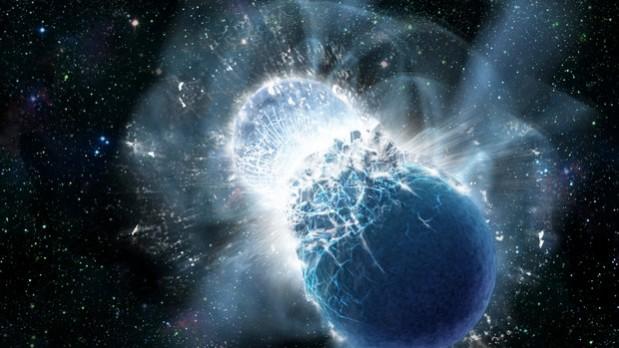
An incredible form of space collision has been spotted by the astronomers for the first time. On Monday, it was announced that they had seen and heard a pair of dead stars collide, giving them their first glimpse of the violent process by which most of the gold and silver in the universe was created.
ALSO READ: Astronomers reveal mystery behind Sun's extremely high coronal temperatures
The astronomers had earlier speculated about what would happen if two neutron stars collided over the years, but this was seen by them for the very first time. The collision of the two stars resulted in an explosion called kilonova.
Here's all you need to know about this finding of kilonova:
1. A huge cohort of researchers working in collaboration with the National Science Foundation's Laser Interferometer Gravitational-Wave Observatory (LIGO), the US-based gravitational wave observatory, and VIRGO, an observatory based in Italy led to this finding.
2. Compared to a regular nova, kilonova is thousand times stronger. This collision took place 130 million light-years away when the neutron stars spiralled toward each other. It led to the production of gold, platinum and uranium which are heavy elements.
3. For the first time, astronomers detected gravitational waves after the collision of the neutron stars and even short gamma-ray bursts before this phenomenon appeared. Previously observed gravitational waves were an outcome of black hole mergers and they were comparatively stronger.
"LIGO and Virgo detected 100 seconds of gravitational waves as these two neutron stars spiralled together in a massive and fiery collision," LIGO Hanford Observatory (LHO) head Michael Landry explained.
"In a sprawling follow-up campaign involving about one-quarter of the world's professional astronomers, observatories in space and on the Earth have detected radiation in all wavelengths from gamma rays to radio waves. But the LIGO and Virgo detectors were absolutely essential in identifying and pinpointing the event in the sky, allowing this campaign to proceed," he added.
4. This collision turns out to be the source of gravitational waves and gamma rays researchers have observed at the closest proximity, it was the nearness that made it possible for the astronomer to see this collision. The gravitational waves are an outcome of enormous events like merging of black holes or neutron stars, and appear in form of rippled disturbances in space time.
5. Astronomers have confirmed this to be the first sighting in which short gravitational waves, gamma rays and kilonova appear almost at the same period of time.
"There are rare occasions when a scientist has the chance to witness a new era at its beginning," one of the astronomers, Elena Pian, said. "This is one such time."
6. This event was speculated by numerous observatories across the world. Even the NASA telescopes present in space or ground were used in analysing this event.
"When the spectrum appeared on our screens I realized that this was the most unusual transient event I'd ever seen," said Stephen Smartt, who was observing with the ESO's New Technology Telescope.
"I had never seen anything like it. Our data, along with data from other groups, proved to everyone that this was not a supernova or a foreground variable star, but was something quite remarkable," he said.
7. The neutron stars are being speculated to be one of the main sources of the heaviest elements in the universe. NASA researchers believe that the neutron stars which resulted in kilonova had more mass than the Sun and were of the size of Washington DC. The stars orbiting together and started moving more swiftly till they ended up colliding with each-other.
"Neutron star mergers produce a wide variety of light because the objects form a maelstrom of hot debris when they collide," LIGO Laboratory executive director David Reitze said.

















